Charles Dellschau (1830-1923), a US outsider artist, left behind fascinating paintings and numerous ciphertexts. Can my readers help me to decrypt these?
In the 1960s a used-furniture dealer, Fred Washington, purchased a number of old books from a trash collector in Houston, Texas. He took them to his warehouse, where they ended up under a pile of discarded carpet.
Only years later a local art collector became aware of the books. They were filled with strange paintings created by a certain Charles Dellschau (1830-1923), a Germany-born butcher who lived in Texas. Dellschau was completely unknown in the art community.
After the discovery of his paintings, Dellschau became posthumously known as an outsider artist. The paintings sold by the trash collector are the only Dellschau works known to exist.
What makes the Dellschau artworks interesting for this blog is that they contain numerous passages encrypted in a simple substitution cipher. Here’s an example:
I have written about Dellschau before. His books are listed on my encrypted books page (#00084).
Dellschau’s paintings
The paintings in Dellschau’s books were created between 1899 and his death in 1923. Here’s a typical Dellschau picture:
Many of Dellschau’s paintings show flight machines, such as balloons, dirigibles, or flying carriages, sometimes including pilots and passengers.
From today’s view, these air vehicles don’t look very realistic.
According to the hand-written texts in his books, Dellschau was a member of a secret society named NYMZA, which developed advanced aeronautic techniques as early as in the mid 19th century. Supposedly, Dellschau’s manuscripts were meant to document these activities.
Of course, NYMZA and their spectacular flight machines never existed. Dellschau’s books can therefore be regarded as illustrated Science Fiction literature, created in a time when aviation was considered a major future technology.
Dellschau’s cryptograms
The book The Secrets of Dellschau by Dennis Crenshaw and Pete Navarro is the leading source for Dellschau and his art. Navarro, who spent decades studying Dellschau’s life and oeuvre, and he broke the cipher the artist used for the encrypted passages contained in his books. For instance, the following encrypted word appears particularly often in Dellschau’s paintings:
It stands for NYMZA, the name of the sad aviation organisation.
To my regret, I am not aware of a good description of Dellschau’s cipher. The aforementioned book only touches this topic very briefly. According to a website that is not active any more, but can be retrieved in the Internet Archive, the substitution table looks as follows:
Using this key, I tried to decrypt the following ciphertext (the upper left part is marked orange):

Source: PD
This is what came out for the marked part:
NOW IF TO SEANTFAN MARTA CLAYM TO BE THE OMT:ENAT
Though this plaintext contains meaningful words, it doesn’t really make sense. I also tried my luck on the following passage:
With a few tweaks, this decrypts to a German sentence (“You need to know how to help yourself”):
MAN MUS
SICH ZU
HELFEN WISSN
Altogether, the key table provided above appears to work not very well. This might be because Dellschau used it sloppily – perhaps he thought of his ciphertexts as art, not as something that carries information. It’s also possible that the table contains a few mistakes, though the main letters seem to be correct.
Can a reader help me to correctly decrypt the ciphertexts introduced above? Is the substitution table correct? I’m looking forward to helpful comments.
Follow @KlausSchmeh
Further reading: An extraordinary encrypted book: George Orwell’s “1984” enciphered in color
Linkedin: https://www.linkedin.com/groups/13501820
Facebook: https://www.facebook.com/groups/763282653806483/

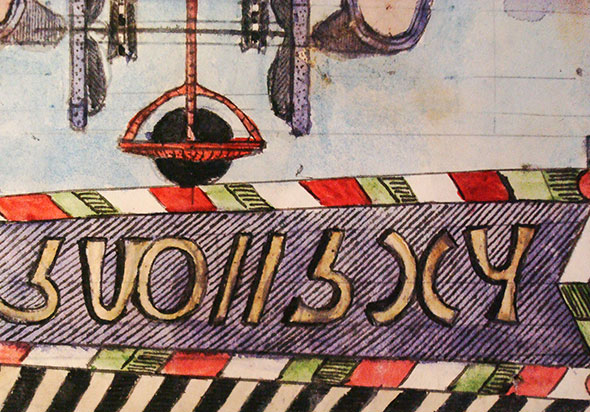
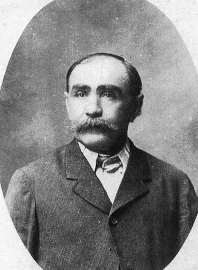
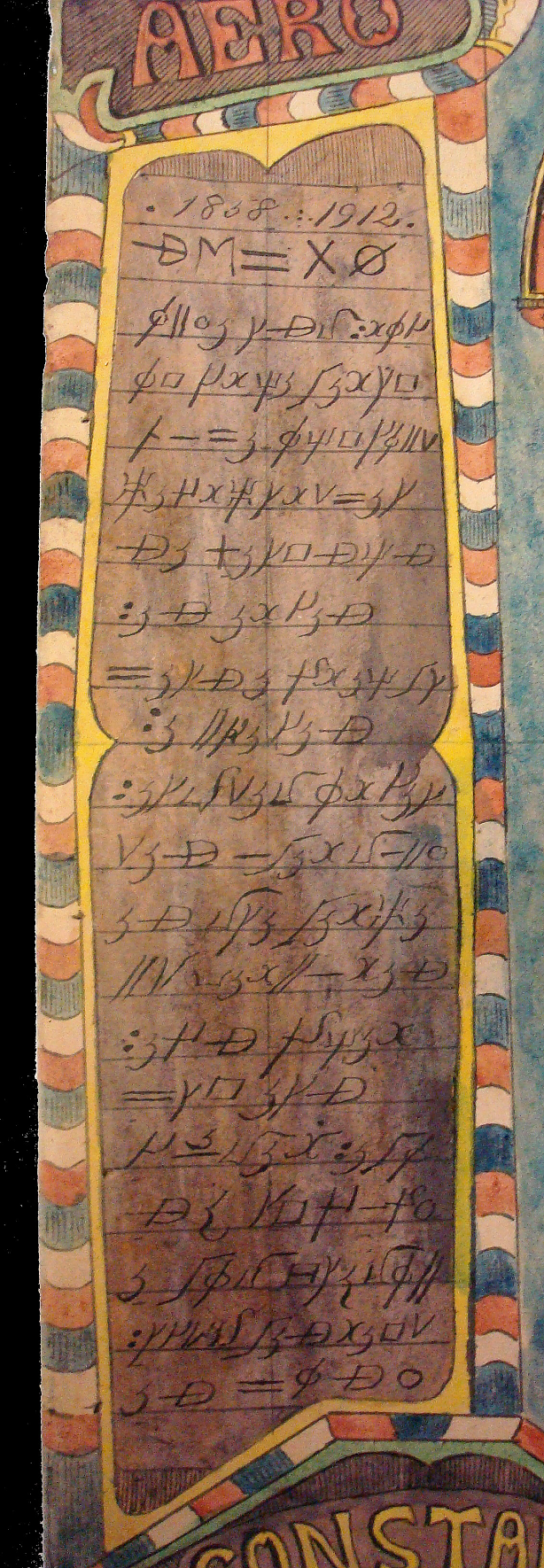
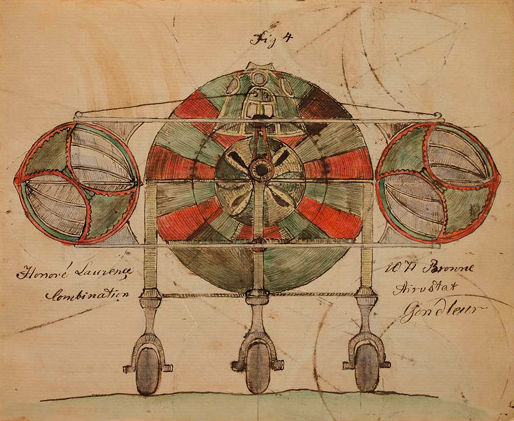
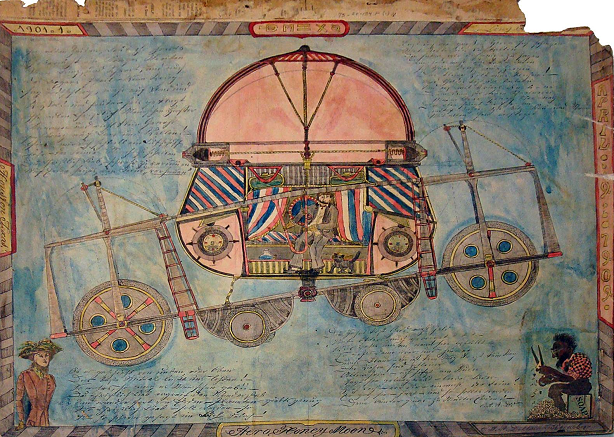

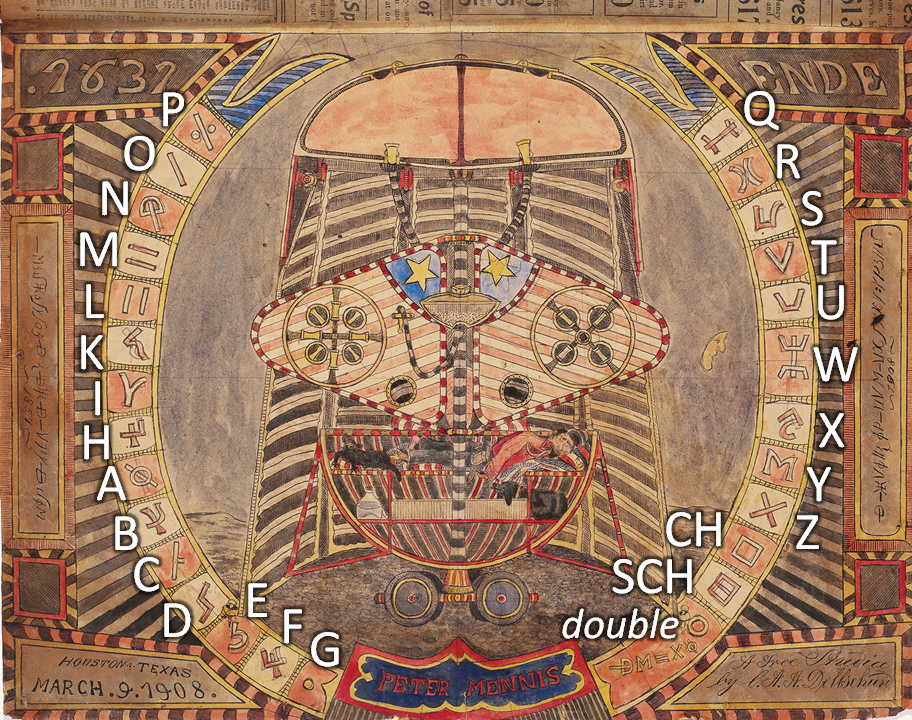


Kommentare (15)